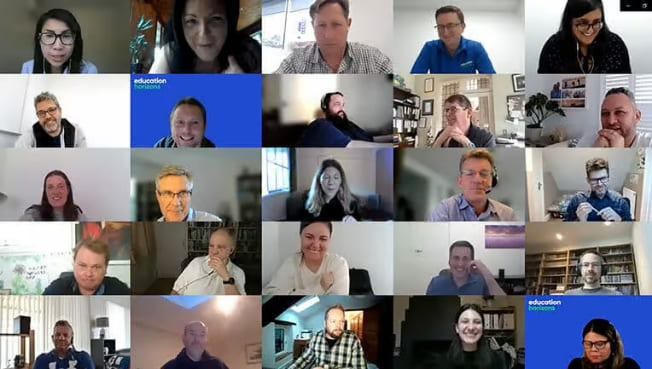In 2020 1.5 billion students around the globe moved to remote and flexible learning as schools closed to contain the spread of COVID-19.
In Australia, over 97% delivered lessons remotely, physically closing their doors.
The preparedness of schools for this transition to remote and flexible learning was varied but it clearly placed a huge strain on the education system and raised many challenges for the sector. As we move into 2021, COVID-19 remains a challenge across the globe with societies constantly adjusting to the reality of living with the virus until the vaccine programs can have full effect.
Schools, in their rapid response to the pandemic have been a pillar of hope for their communities to remain connected by supporting teachers, students and their families. The resilience of schools has been remarkable, with many tackling COVID-19 as an opportunity to create new and innovative ways of working. For example, Estonia has one of the most advanced digital societies in the world and has built an e-education information system for all Estonian schools.
Our latest survey
The Education Horizons Group 2021 survey of more than 1000 education professionals identified different perceptions by role types of their school’s preparedness for the pandemic. The experience of implementing remote and flexible learning has absolutely been different for every individual. Interestingly, our survey identified a difference in how teachers and school leaders rated their level of preparedness for remote learning. This raises some important questions about how teachers and school leaders understand the challenges of student learning and how schools support lesson planning and preparation – both under unique circumstances like remote learning and also in the classroom.
Why is there disparity in experience between role types?
We know that school leaders were focused on the responding to government policy and COVID-19 compliance practices, implementing technology to connect their school online and responding to staff and student wellbeing. While teachers were focused on adapting the curriculum to optimise the remote learning environment.
Teachers re-imaged reporting and assessment, focused on the home-school partnership with parents and the social development and emotional wellbeing of students. Each role within the school system continues to have unique challenges.
 As we move into 2021, schools will continue to shape and reimagine the future for the education system through their ongoing experiences of COVID-19.
As we move into 2021, schools will continue to shape and reimagine the future for the education system through their ongoing experiences of COVID-19.
Our 2021 survey indicates that the top priority for schools will be to focus on student and staff wellbeing while continuing to enhance academic outcomes. Schools have also identified a critical need to re-examine curriculum and assessment priorities, explore opportunity for technological innovation and invest in tutoring to reengage students who fell behind in remote learning. One thing that everyone can be certain of, is that COVID-19 has challenged how educators practice and will continue to shape the future of the education sector.
How will your school continue to be a pillar of hope in 2021? #pillarofhope
